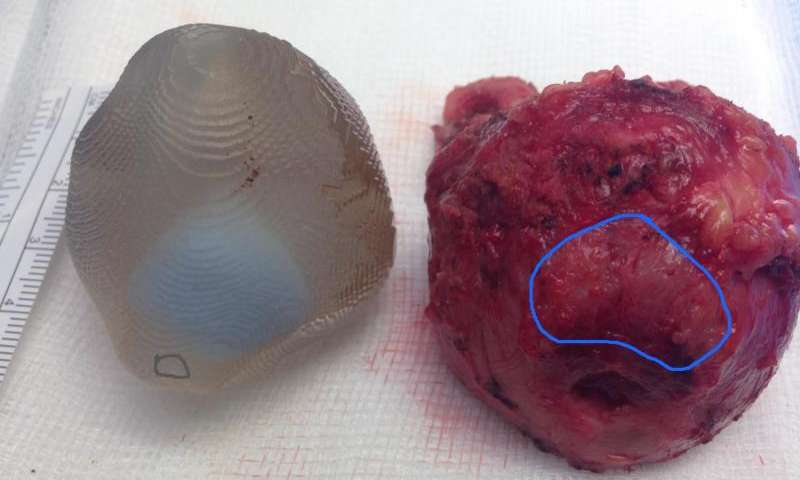Surgeons in the UK have used a 3D printed model of a man’s prostate to help them remove a cancerous tumour.
3D printed models are becoming big business in the medical industry and heart surgeons now use them on a regular basis to plan out complex procedures. The prostate is in a fairly inaccessible place, so it’s important that the doctors have a clear view of what they’re dealing with when they go in to remove a tumour.
The prostate is tucked away
The prostate gland is in a seriously sensitive area packed with nerves and important plumbing. One slip can leave the patient dealing with incontinence and impotence for the rest of their life. So to save the patient from serious distress, it’s important to cut in the right place to get the cancerous prostate free.
Alongside the £2 million robotic system that the team used to cut out the cancer, the team of NHS surgeons at Guy’s and St Thomas’ NHS hospital used a 3D model to ensure they had a clear idea of the extremities of the gland at every stage of the process.
The Da Vinci robot has enhanced surgical procedures and has eliminated a lot of human error, but it comes at a price. The doctor has no direct contact with the gland, which means that all-important sense of touch has gone.
As the hospital uses this equipment on more than 300 operations a year, this could be just the start of the 3D printing trend in the fashionable area of London.
The 3D model saves time and money
An MRI scan was fed into a CAD design program and the model cost £150-£200 in total to produce. If it saves minutes of surgery time, then, it has easily paid for itself.
The model also helped the doctors make critical decisions, as it revealed that one side of the gland was totally smooth and the doctor could make a decisive cut. That saved a nerve bundle, which could mean the patient goes on to have a much better quality of life.
Lead surgeon Professor Dasgupta said: “These bundles are important to the patient. They go to the penis and help with the recovery of erections. Using this 3D model, we can plan surgery better, we can counsel the patient better and we hope to be able to remove the cancer successfully. If I didn’t have this, there would be an element of guesswork.
“It shows you the power of MRI, it shows you the power of this software, it shows you the power of 3D printing. If it proves to be as useful as it seems, I think it has a great future.”
CT scans started this whole adventure
3D scanning had already helped this patient. He had no idea the prostate cancer was taking hold. A CT scan in India revealed the problem and started him on the path that led to a surgeon holding a visual representation of his prostate in his hand, then getting hold of the real thing.
“He had absolutely no idea this thing was growing inside him,” said Professor Dasgupta.
The hospital has embraced 3D printed models in a big way and last year used a printed kidney to help plan out a complex transplant operation on a three-year-old girl.
3D models are here to stay
It’s a relatively new innovation, but it’s on its way to becoming standard practice in complex procedures. We never really envisaged 3D printing being used like this, but that’s the beauty of modern technology. It becomes what it needs to be in the hands of those that know best.
As always, we’re curious to see where this takes us.



